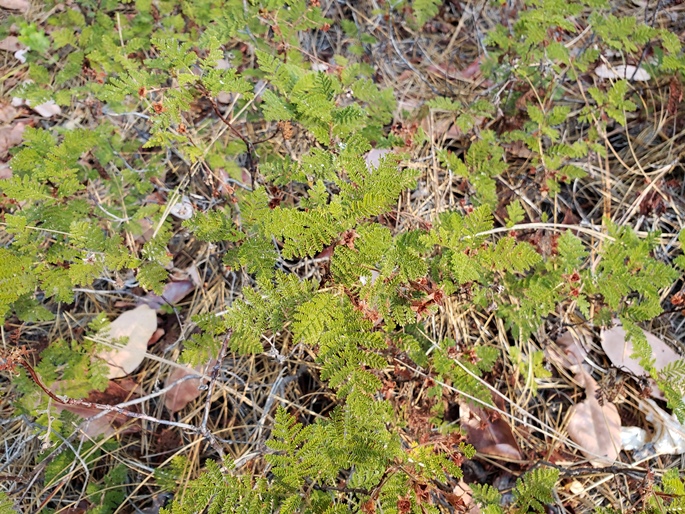There’s a particular fragrance on the western slope of the Sierra Nevada. Like a resinous perfume. Before we moved up here I always noticed it here in particular. It’s how I identified with this place and how I felt it had something special for me.
Now I’m not talking about the aroma of the marijuana harvest. That’s abundant at this time of year, and I fear it masks the fragrance of this little plant.
This little plant goes by several common names. It’s called mountain misery, bear clover, and a name from the Miwok people is kitkitdizze (pronounced kit kit dizzy). The latter is my favorite.
It’s scientific name is Chamaebatia foliosa. It is native to the entire western slope of the Sierra Nevada mountain range, the only place where it lives. To me, its fragrance makes it a distinctive plant that tells me I’m home.
I love the smell of it but some people don’t. It’s a resin with a touch of creosote aroma and a lighter herbal fragrance. It is quite strong if you handle it and smell it up close but the diluted fragrance in the air is much more enjoyable.
The local Pulitzer Prize winning poet and long-time homesteader in the area, Gary Snyder, built his homestead and called it Kitkitdizze.
The resin kitkitdizze produces is sticky. This is where the name mountain misery comes from. It sticks to animals, pants, shoes, and socks. I hear that it creates a black gum that accumulates in blobs. But I haven’t had this experience.
In the summer when the oils and resins are developing and the fragrance is emitting I find it fairly sticky, but not overwhelming. It could be dry rain years. Late summer is when it would be heaviest, but I haven’t noticed the fragrance nor much stickiness at all in the past few years. So it could be the exceptional drought is reducing the resin production.
It is a low growing ground cover, usually less than a foot or two tall. But sometimes it’s considered a shrub reaching up to 5 ft. tall. It’s a member of the rose family and has a springtime bloom of white five-petaled flowers with a cheery yellow center, looking similar to strawberry flowers.
It lives in the partial shade of the Sierran forests under Ponderosa pines, Douglas firs, Incense cedars, Jeffrey pines, manzanitas and Pacific dogwoods.
This plant isn’t all about misery as one of its common names suggests. It plays an interesting role in the forest.
It grows and spreads with a vigorous underground rhizome system, and the roots are very deep. The plant’s roots and rhizomes suck much of the soil’s water which prevents seedlings from starting. Thus the plant naturally limits the number of trees in an area. Like a natural fire damage control.
The resins make the plant flammable and it grows amongst the duff of the native conifers but it’s usually low enough to not be a ladder fuel.
In normal rain years, in this fire ecology of the Sierras, fires were started by lightning and some by early humans. They were more of a ground fire, or a cool fire. The kitkitdizze burned, along with the duff, but came back quickly to go on protecting the soil and forest. Cool fires have a role in releasing some nutrients back to the soil, helping the trees.
Fires of today are far more intense, not good for the soil, and are the result of the megadrought we are going through but also long term fire suppression.
The roots and rhizomes make it difficult to remove the plant. Perhaps that’s why misery is part of the name.
The native peoples used the leaves of kitkitdizze as a tea for a variety of ailments. I haven’t tried it but they say it’s an acquired taste.
Today when I brush the leaves with my hand to pick up the resin, the leaves are dry and very little fragrance is present. And the air around me smells like marijuana harvest, not like the forest that drew me up here. I hope it rains plenty this winter and I hope to smell the kitkitdizze in the air again next year. Please join me in watching for the fragrance.


I like the way you explained how the scent makes you feel. I hope I get to see and smell it myself!
Thank you Cheryl. Now that you’re more aware of it you may notice it more.